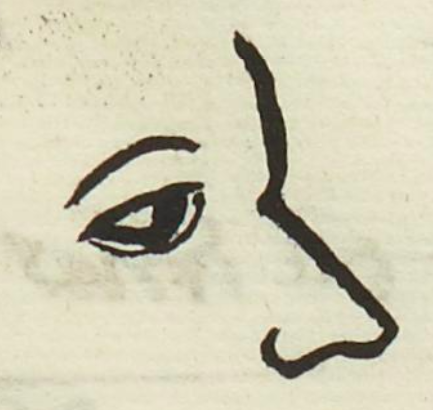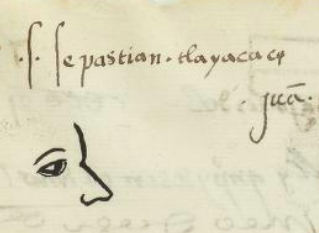Tlayacac (MH748v)
This black-line drawing of the simplex glyph for the place name Tlayacac (perhaps “At the Lead”) shows a simplified face (xayacatl) of an eye, forehead, and nose (yacatl). The term for nose serves as a phonetic indicator for the latter part of the name, ending with -yacac. The gloss gives Tlayacac (or Tlayacanqui, given the small symbol at the end, possibly a q).
Stephanie Wood
The concept of leader builds upon the word for nose (yacatl), which leads the way as a person walks, being the foremost part of the anatomy. See below for some other examples of noses relating to place names and personal names. Faces tend to be more elaborate. The profile view takes precedence, but very occasionally, one gets a frontal view of a face, possibly through European artistic influence.
Stephanie Wood
1560
Jeff Haskett-Wood
caras, narices, nariz, líderes, guiar, nombres de lugares

tlayacanqui, leader or guide, https://nahuatl.wired-humanities.org/content/tlayacanqui
-yacanqui, leader, https://nahuatl.wired-humanities.org/content/yacanqui
yaca(tl), nose, https://nahuatl.wired-humanities.org/content/yacatl
xayaca(tl), face, https://nahuatl.wired-humanities.org/content/xayacatl
posiblemente, A La Cabeza
Stephanie Wood
Matrícula de Huexotzinco, folio 748v, World Digital Library, https://www.loc.gov/resource/gdcwdl.wdl_15282/?sp=575&st=image
This manuscript is hosted by the Library of Congress and the World Digital Library; used here with the Creative Commons, “Attribution-NonCommercial-ShareAlike 3.0 License” (CC-BY-NC-SAq 3.0).








